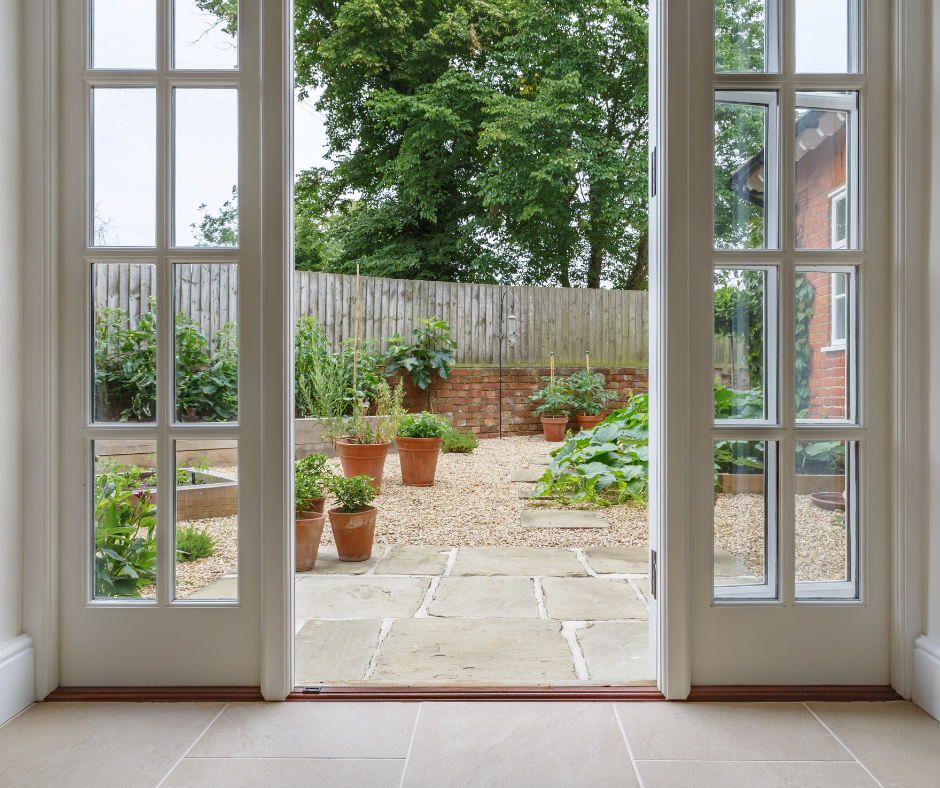There can be a number of locations within your rental property that do not meet the current safety glass regulations which may have never crossed your mind. Common examples that we regularly come across are internal French door or single glazed conservatories. Typically these have been in situ for many years and whilst there may have never been breakages or incidents they no longer meet the current requirements. In this guide we will look at what you should know and how best to safeguard yourself and your tenants.
Safety Glass Regulations
The varieties of glass that can be put in windows, doors, and other glazing places are governed by safety glass regulations. Safety glass or safety guards must be installed in order to meet the glazing requirements of the Building Regulations, in the the areas of concern also known as “Critical Locations,” in order to safeguard humans from harm. Injuries from glass breakage that could cause cutting and piercing injuries are most likely to occur in doors, door side panels, low windows, low level glass in walls, and glass partitions.
All doors, windows, and glazed sections that are lower than 800mm from the floor level should have safety glass installed. Toughened glass can be substituted with 6mm glass or laminated glass for glass panels that are less than 250mm broad.
What is Regulation 14?
According to Regulation 14, every window and other transparent or translucent surface in a wall, partition, door, or gate must be made of a safety material or protected from breaking if necessary for reasons of health or safety. Additionally, it needs to be clearly labelled or include features to make it obvious. If an accident involving these glazed spaces occurs, employers or landlords who don’t comply with regulation 14 run the danger of litigation. Glazing is first subjected to a risk assessment to determine whether or not there is a risk of injury (recommendations can be found in BS6262 part 4).
What are critical locations in glazing?
1. Door glazing: Glass that is entirely or partially within 1500 millimetres of the floor. Any glass in doors that does not begin more than 1500mm from the floor must be safety glass, as shown in the image below.
2. Glazing next to doors – Windows and side panels that are fully or partially within 300 mm of a door’s edge and fully or partially within 1500 mm of the floor must be made of safety glass.
3. Low Level Glazing—Other glazing that is entirely or partially within 800 mm of the floor but is not covered in (1) OR (2) ABOVE. This means that if the bottom of the glazing is within 800mm of the floor level, windows that are not situated within 300mm of a door must utilise safety glass.
Glazing diagram
Glazing fitted in “Critical Locations” shall either: Break safely, i.e., be laminated or toughened Class C safety glass compliant with BS6206. alternaively it must be Class B of BS 6206 if it is fitted in a door or door side panel and has a width or height greater than 900mm. These specifications could also be stamped with an EN number. Regular wired glass is NOT safety glass. The guidelines are applied to both pieces of glass in double-glazed sealed units.
According to BS6206, all safety glazing needs to be permanently labelled. After the glass has been installed and the beading and pointing are finished, the markings should still be clearly visible. For safety glazing, interior and door side-panels, as well as at a low level in walls and partitions, are the most likely sites for collisions that could result in glass cutting and piercing injuries.
Landlords must know what kinds of glass are in their rental properties, including laminated glass, and if the glass and position can shield occupants from harm.
It is the duty of a landlord to be knowledgeable about the legislation regarding glazing standards.
What safety checks can be carried out?
All existing buildings, components, and fittings should be surveyed to determine compliance. The ‘Duty Holder’ or the landlord will be held liable for any injuries caused by non-compliant glazing. The Audit Regulation, 14 of the Workplace (Health, Safety, and Welfare) Regulations 1992, establishes a duty to ensure that the safety of building users is not jeopardised by the glass breakage of glazing materials, so that such materials either break safely or are not by their nature.
What is Fitness for Human habitation act?
The Fitness for Human Habitation Act became effective for tenancies in England on March 20, 2019.
This legislation amended the Landlord and Tenant Act of 1985 to require landlords to ensure that their property is fit for human habitation at the start of the tenancy and then maintain this standard for the duration of the tenant’s stay.
Any glass in a critical area should have safety glazing. Building regulations have been in effect for all replacement glazing since April 1, 2002. The regulations cover thermal performance as well as safety, air supply, means of escape, and ventilation.
External windows and doors are classified as “controlled fittings” under the Building Regulations, and as such, certain standards must be met when such a window or door is replaced.
The approved documents section contains general guidance on the performance expected of materials and building work to comply with building regulations, as well as practical examples and solutions for achieving compliance for some of the more common building situations.
You could hire an installer who is a member of the relevant competent person scheme. Without involving local authority building control, a registered installer will be authorised to carry out the work required to comply with building regulations.
When the work is finished, you will be given a certificate proving that it was done by a registered installer.
You could also use an unregistered installer or do it yourself, in which case approval from the relevant Building Control Body – either your Local Authority or an Approved Inspector – is required.
They will inspect the replacement window(s) or door(s) for compliance and, if satisfied, will issue a compliance certificate.
Final thoughts
Identifying and removing or replacing glass that does not meet safety glass regulations is relatively simple, however if you remain unsure feel free to use our free discovery call service for further assistance and guidance.


